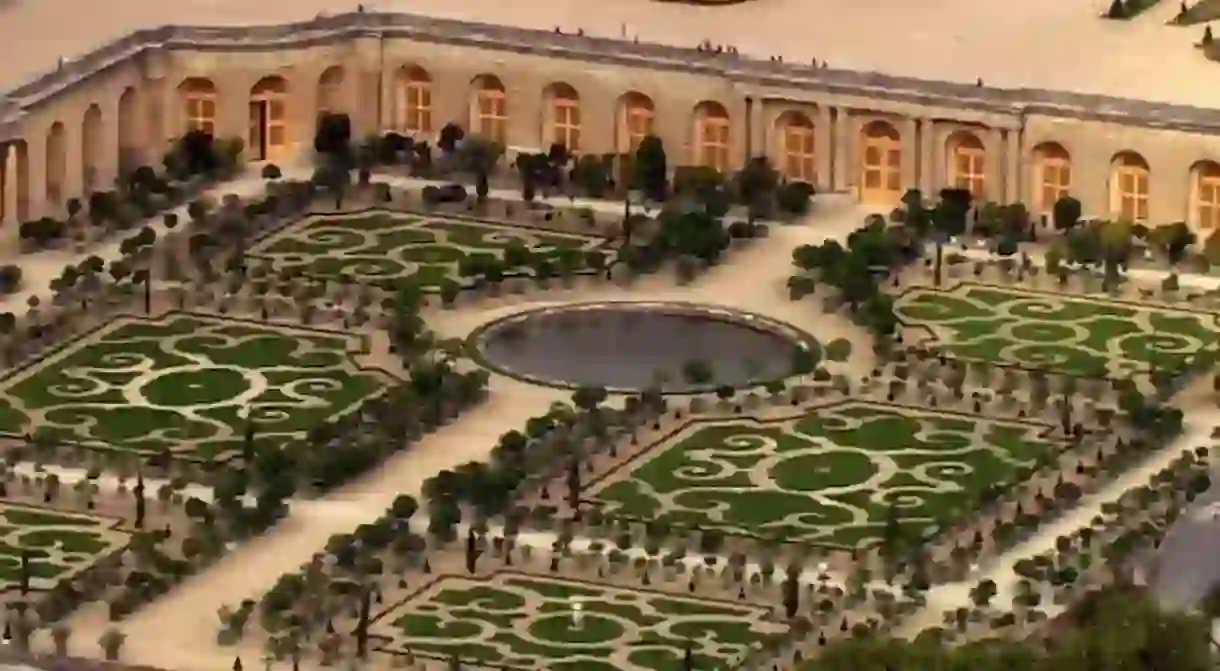A Royal Tour of Versailles Palace, France

The Royal Palace of Versailles is a well-known symbol of profligacy, and it’s steeped in turbulent history. We take a closer look at the iconic destination and offer up some of our favourite trips and tours of Versailles.
Three French kings ruled from the palace amidst staggering opulence, each adding their own touches and renovating to suit their personal needs. Due to its sheer size, visitors today rarely get a chance to experience everything Versailles has to offer, so here’s a round-up of the palace’s best bits – and some intriguing facts you probably didn’t know.
Versailles Palace & Marie-Antoinette's Estate Private Guided Tour with Lunch
Historical Landmark

The Palace of Versailles, located near Paris, France, is an opulent symbol of absolute monarchy and French grandeur. Initially a hunting lodge, it was transformed by Louis XIV into a magnificent palace with ornate halls, such as the famous Hall of Mirrors. The palace’s extensive gardens and fountains add to its splendor. Marie-Antoinette’s Estate, situated within the Versailles grounds, includes her private residence, the Petit Trianon, and a rustic hamlet she had built. This estate reflects her desire for a simpler life away from court politics, offering a striking contrast to Versailles’ lavishness.
Background
One of the most popular attractions on the planet, this World Heritage site is located just outside of Paris and draws a whopping 10 million visitors each year.
Between 1682 and 1789 Versailles was the fulcrum of social and political power in France. King Louis XIV (the longest-reigning monarch in European history) embarked on a project to extend his father’s former hunting lodge into a palace of gargantuan proportions, and simultaneously to cement his authority as absolute ruler.
After relocating the royal family, Louis XIV moved his entire court and government to the palace. Away from interference, the French aristocracy lived alongside politicians in a hermetically sealed world of gilded luxury. Beyond the walls, however, resentment bubbled away, out of sight and out of mind.

The world’s most spectacular room?
The palace’s main reception room, and perhaps its most defining feature, is the Hall of Mirrors. An unmissable spectacle of grandeur, the gallery boasts 357 mirrors, plus chandeliers and glass doors. The 12-metre (40-foot) ceiling is adorned with decorative murals and 17 arched windows frame perfect views of the grounds.
In accordance with Louis XIV’s decree that no materials were to be imported, Venetian glass specialists were poached and brought to France in order to create and install hundreds of mirrors. Rumour has it that Italy’s authorities were so vexed that they ordered the assassination of these Venetian ‘traitors’.
The grounds
Over the course of 40 years, the long-reigning Sun King (Louis XIV) simultaneously landscaped the surrounding park and gardens of Versailles to create an eden of fabulous fountains and fantasy pathways that are all open to the public today.
His successors, Louis XV and the last king of France, Louis XVI, continued this work by adding summer residences (the Grand and Petit Trianons) where the royal family could escape the hustle and bustle of the main complex, and a whimsical hamlet complete with a working farm and rustic cottages.
There are many picturesque walks through the grounds that take in these must-sees, and shuttle buses are available (at a price) to run you back to the palace. This is a great s, allowing you to cram in as much as possible.
Versailles’s most famous inhabitant
Marie Antoinette, the last Queen of France, is perhaps the best-known resident of Versailles. Married at just 14, she ascended the throne with Louis XVI before turning 20.
Cocooned in luxury, she quickly gained notoriety for her extravagant personal style – which included towering hairdos dripping in diamonds – and was heavily criticised for eschewing court life, preferring instead to surround herself with close friends in private apartments.
Marie Antoinette was passionately hated by the people of France and was the subject of vicious gossip at court. The Petit Trianon, a small château built in the palace grounds by Louis XV, became her sanctuary.
It stands today as a monument to Marie Antoinette’s life at Versailles. Make time to visit during your trip and stroll through the gardens she commissioned, where she was famously told that a revolutionary mob was coming for her.

Revolution and preservation
Housing close to 10,000 people within the palace walls at its peak, the Palace of Versailles aimed to assert political and artistic superiority over the rest of the world. But instead of solidifying the monarchy’s power as Louis XIV had planned almost a century earlier, its isolationism only enraged the common people.
In 1789 the French Revolution erupted. Aristocrats and politicians alike were brutally guillotined by the Republican uprising and King Louis XVI was deposed.
The royal family were spared no mercy. Both king and queen were sentenced to death by guillotine, charged with a plethora of crimes including sexual promiscuity and high treason.
After the revolution, the emergent French Republic commandeered parts of the palace for their National Assembly and Senate. Many paintings were requisitioned as public property, and Versailles was eventually preserved as the historical museum you see today.














